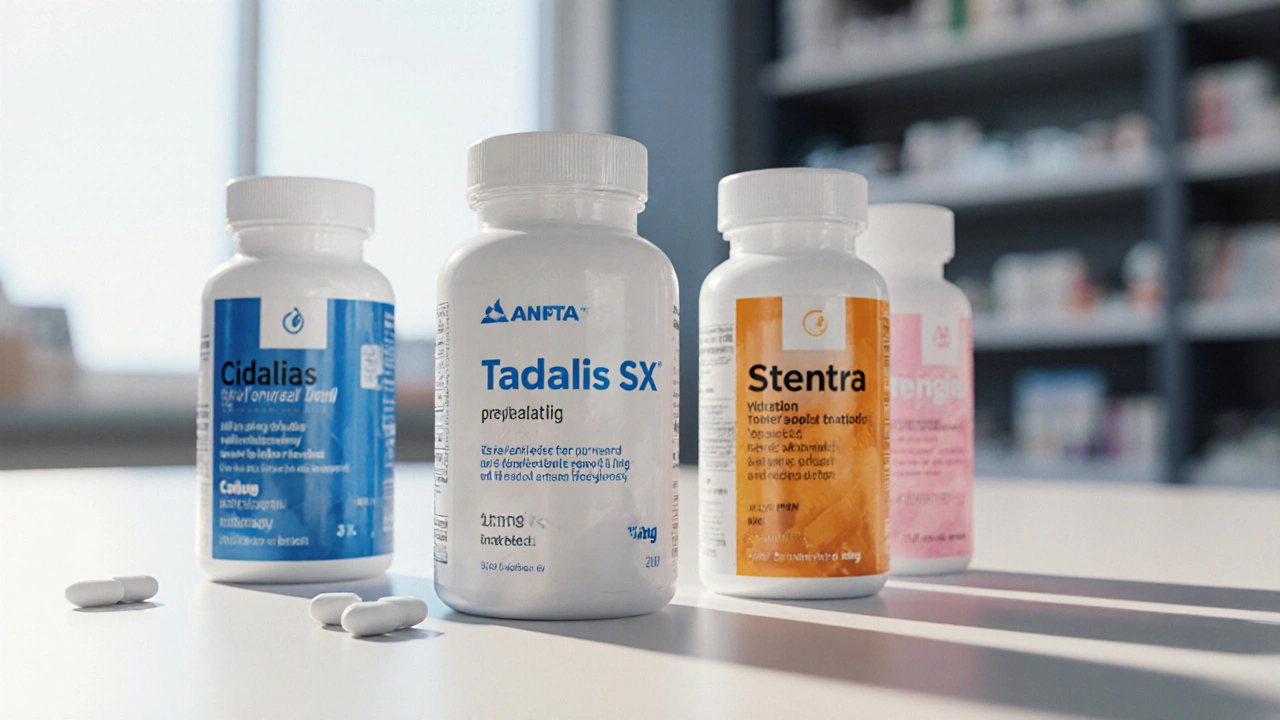Tadalafil – Complete Guide
When working with Tadalafil, a phosphodiesterase‑5 (PDE5) inhibitor approved for erectile dysfunction (ED) and benign prostatic hyperplasia (BPH). Also known as Cialis, it provides longer‑lasting erection support compared with other drugs in its class.
As a member of the PDE5 inhibitor family, Tadalafil works by blocking the enzyme that restricts blood flow to the penis, which means Tadalafil helps maintain an erection when sexual stimulation occurs. The condition it primarily treats, erectile dysfunction, affects millions of men worldwide and often signals underlying health issues like cardiovascular disease. In addition to ED, Tadalafil’s ability to relax smooth muscle makes it useful for benign prostatic hyperplasia, easing urinary symptoms caused by an enlarged prostate.
Key Aspects You’ll Want to Know
Understanding dosage is the first step. Tadalafil comes in 2.5 mg, 5 mg, 10 mg, and 20 mg tablets. The low‑dose daily regimen (2.5 mg or 5 mg) keeps the drug in your system, allowing spontaneous activity without planning. The higher‑dose “as‑needed” option (10 mg or 20 mg) is taken about 30 minutes before intimacy and lasts up to 36 hours. Choosing the right schedule depends on lifestyle, health status, and how often you anticipate sexual activity.
Side effects are generally mild but worth monitoring. Common complaints include headache, flushing, upset stomach, and back pain. Rarely, users experience sudden vision loss or priapism—a painful erection lasting more than four hours that needs medical attention. Because Tadalafil also affects blood pressure, it should not be combined with nitrates or certain alpha‑blockers; doing so can cause a dangerous drop in blood pressure.
When it comes to alternatives, Sildenafil, marketed as Viagra, is the most well‑known competitor. Sildenafil works similarly but has a shorter window of effectiveness (about 4–6 hours). Vardenafil (Levitra) sits between the two in terms of duration and potency. Choosing between them hinges on personal response, side‑effect tolerance, and how quickly you need the effect.
Drug interactions extend beyond nitrates. Certain antifungals, antibiotics, and HIV medications can raise Tadalafil levels, increasing the risk of side effects. If you’re on heart medication, have liver or kidney disease, or are elderly, a lower starting dose is often recommended. Always discuss your full medication list with a health professional before starting therapy.
Beyond the medical facts, lifestyle factors play a big role in how well Tadalafil works. Regular exercise, a balanced diet, quitting smoking, and moderating alcohol intake improve vascular health, which in turn supports erectile function. Managing stress and ensuring adequate sleep also contribute to better outcomes.
The collection below pulls together practical guides, safety checklists, and comparison charts that dive deeper into these topics. Whether you’re looking for dosing tips, side‑effect management, or a side‑by‑side look at other PDE5 inhibitors, the articles ahead will give you the details you need to make an informed choice.

